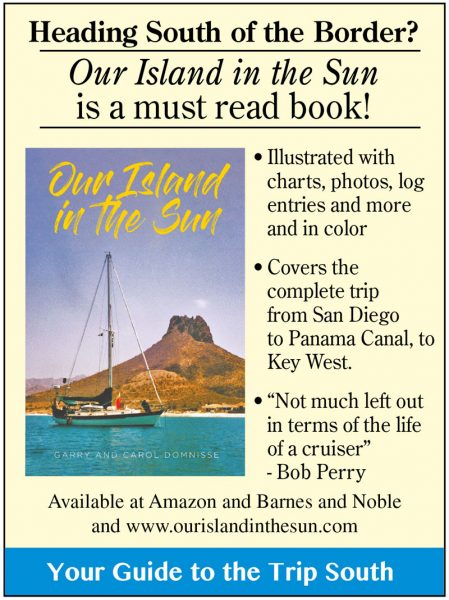
Is New Zealand Just California South?
How easy would it be to fake an international flight? You step into a big metal tube, it shakes around a bit — not unlike a ride at Disneyland — and 12 hours later, the door opens. Besides all the people speaking with accents, cars driving on the other side of the road, toilets draining the other way, colorful, plastic-y money, football with no pads, and basketball with no backboards (seriously, it’s a thing), the place you’ve arrived in is not all that different from the place you left. The differences are both subtle and glaring, but the verdict remains: New Zealand looks and feels so much like California.
Exhibit A: The landscape. As discussed recently, New Zealand — at least in Northland — does a fantastic impression of Marin County. The small, shrubby islands look exactly like those found in my home waters of San Rafael Bay.
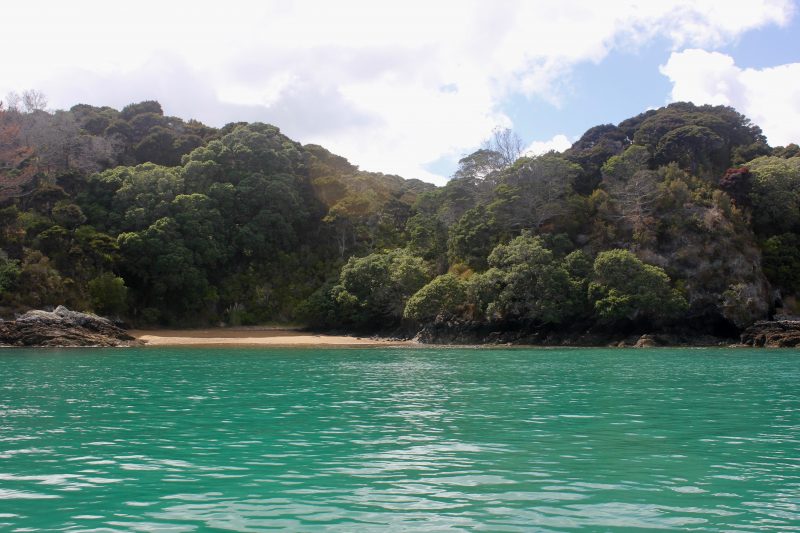
But there’s a tropical vibration humming through everything. The water is turquoise, jade, or royal blue compared to the Bay Area’s muddy chocolate latte that we’ve come to love (or endure). Most New Zealanders will tell you that the water, even in the north, can be chilly, but if you’ve ever ‘trunked it’ in the Bay, then you’ll find the temperature quite tolerable, even perfect.
That tropical vibe permeates the seemingly-identical landscape, too. There are large ferns — the ubiquitous symbol of New Zealand — and alien-looking trees mixed in with that California-esque flora, and there are strange sounds croaking from the depths of the foliage.
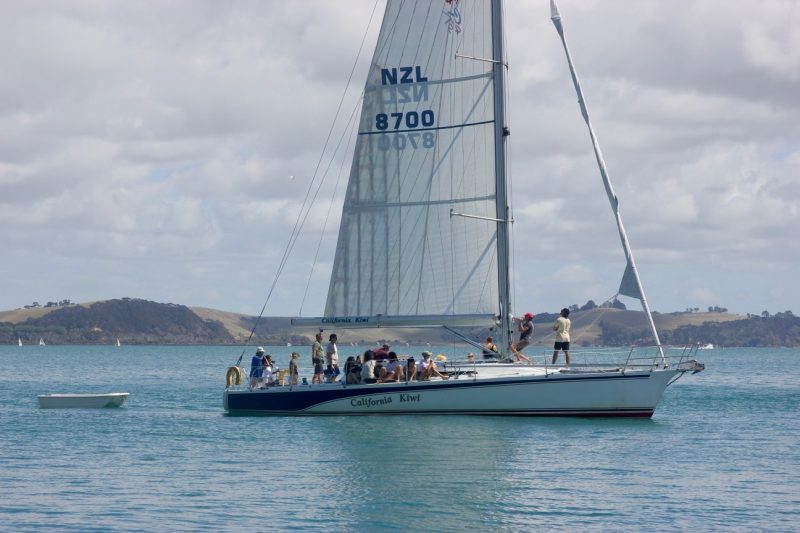
Exhibit B: The culture.
“The two-lane highway across the North Island wound through a green and pleasant land of sheep-covered hills, deep forest, and cozy cafés offering ‘Devon Tea,’ a pot of Earl Grey and scones filled with jam and clotted cream,” wrote Tony Horwitz in Blue Latitudes. “This is the stock image of New Zealand: the Britain of the Southern Hemisphere, more English than England, a wooly colonial throwback.”
After exactly 18 hours of research, I was prepared to respectfully disagree with Mr. Horwitz. New Zealand’s boating centers, upon first and cursory glance, are more Californian than California. Everyone is super laid-back and listening to classic rock, and there are lots of young Americans working at the shoreside businesses. (I would have assumed that New Zealand’s English colonial vestiges would more closely resemble the East Coast. Not so . . . so far.)
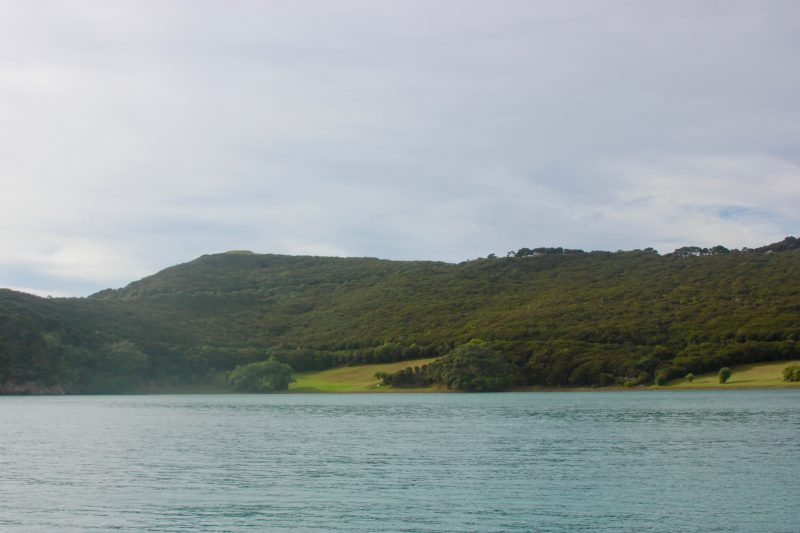
In Northland, there’s a tight-knit cruising community — many members of which are Puddle Jump veterans — whom you’re constantly running into around parking lots and shoreside hangouts. You know people by their boat’s name as much as their first names. Everyone discusses their cruising plans, although everyone’s cruising plans are in constant flux with the weather, boat work, parts, and injuries (it turns out being on land can be more dangerous than being at sea). After arriving from the far reaches of the Pacific and being strangers in a strange town, foreign cruisers are suddenly more at home than they would be in the bustling megalopolises from which they came.
There’s a difference in cultures, though. As I exited a bus with a bulky suitcase on an empty road in Northland, a car stopped in less than a minute. “Get in,” said a shirtless Kiwi man, issuing a command more than making a request. He and his wife said they’d been sanding their boat all day, and were on their way to “watch the rugby” (football with no pads). They insisted on giving me a ride.
Can you imagine this happening in the Bay Area? Not bloody likely.
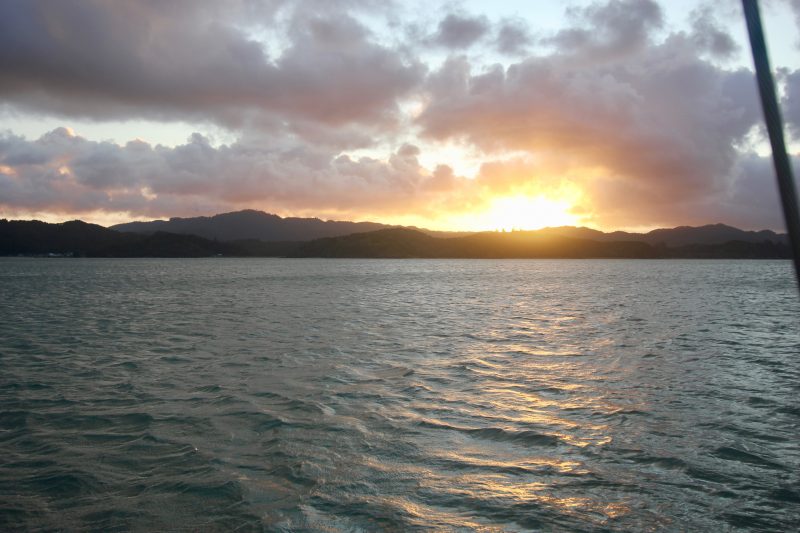
It’s a little strange to get off a long flight without a dramatically foreign culture meeting you at the terminal, or at least, a serious case of jet lag. (New Zealand is only three to four hours behind the Bay Area, but a day ahead.) To be sure, the country’s landscape is guaranteed to change with one’s change in latitude, but so far, it’s been a surprisingly charming — and at times head-scratching — experience to see a place that so closely resembles home.
Addendum: Let’s talk about the elephant in the self-isolation room. When I arrived in New Zealand in early March, I waltzed through customs. Just a few days ago, the Kiwis imposed a 14-day self-isolation policy for incoming visitors. Yesterday on the radio, I heard that New Zealand had seen its biggest one-day spike in coronavirus cases. Also, Cyclone Gretel passed the North Island of New Zealand on Monday. The storm barely registered in local media, but there was a buzz in the cruising community. After some forecasts called for a direct-ish hit with 50-knot winds and 30-ft waves, the storm passed to the north, bringing rain and some gusts, but nothing crazy. Regardless of your sense of impending doom, one must go with the flow.
Live Crew Overboard Training
BAMA conducted our 2020 Live Crew Overboard Training event Saturday as scheduled. We had five boats registered. Two dropped out due to weather or illness, but we still had three that showed up.
The weather was truly miserable when I first arrived at the dock in Sausalito in the morning, but the blustery rain band soon moved east and gave way to quite pleasant conditions, with about 10 knots of breeze, filtered clouds, occasional sunshine and a few light showers. With fewer participants, we had lots of time for the event, and boats could make more than one run.
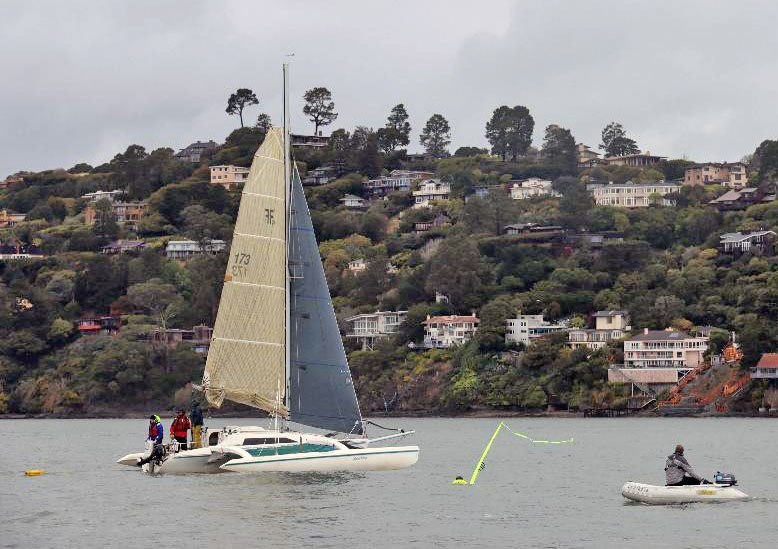
We learned a lot. Here are some of the highs and lows that we observed:
Highs
- All three boats successfully recovered their overboard crewmember. Two of the boats attempted a skipper overboard, and the crew got the boats back and recovered their skippers. Good!
- With Coast Guard permission and coordination, we tested live activation of an AIS crew overboard beacon. That worked really well, with accurate GPS location transmitted directly to the chartplotters of nearby boats (see picture), providing easy direct navigation to the person in the water.
- Favonius (a Dehler 46 monohull with fairly high freeboard) did a very slick and quick recovery of their overboard crewmember by electric winch.
Lows
- One Dan Buoy inflatable crew overboard module failed to inflate, and just sank. That Dan Buoy had worked fine during our previous COB training event last fall, and had been professionally recharged and repacked afterwards. And the Dan Buoy is obviously useless if it doesn’t inflate. Not good. This skipper will be buying a traditional crew overboard pole instead.
- Two boats had trouble with their Lifesling deployments. One had a tangled line, causing the Lifesling to trail very close behind the boat, making it hard to bring the Lifesling to the overboard crewmember. Another did not have the line securely attached to the boat, and the Lifesling came loose and was just drifting in the water.
- One life vest failed to inflate. The cartridge was full, but had somehow gotten twisted loose and was not firmly connected, and thus didn’t inflate the vest. Everyone, please make sure to check all of your inflatable life vests frequently to see that they are reporting “green”! Fortunately, unlike the Dan Buoy, the life vest was easy to inflate with the manual inflation tube, so that worked as it should have.
Things that go wrong are things that we learn from. Just like with sailing itself, doing well with crew overboard recovery is not just about reading up on it and knowing what to do in theory. It’s about training, practicing crew overboard recovery again and again until the kinks have been worked out of the process, and ensuring that all crewmembers know what to do when it actually happens in real life. And it’s about observing what gear and what techniques work well for your specific boat, and being prepared to handle situations where some piece of equipment fails to work as it should. That is precisely why we do the live crew overboard training.
Our Island in the Sun by Garry Domnisse
Buy Direct from the Author and Save – www.ourislandinthesun.com.
- General Sailing
- Racing
- International Racing
- Current News
- Events
- Heading South
- Circumnavigators
- America's Cup
- COVID-19 Sailing
COVID-19 Event Adjustments
Northern California
The new ‘shelter in place’ order affecting much of the Bay Area has prompted the Bay Area Multihull Association to cancel or postpone the Doublehanded Farallones Race. “We have been forced to cancel the 2020 Doublehanded Farallones Race that had been scheduled for March 28,” writes BAMA commodore Truls Myklebust. “Given the shorthanded format with just two people on each boat, we had been working hard to find alternate solutions that would allow us to still run the race. But in the light of the shelter-in-place order, we have no choice but to cancel the race. We are going to try to find an alternate race date in the fall.”
The Pacific Cup YC will conduct webinars in lieu of in-person seminars. The first, on March 19 at 7:30 p.m., will feature Sail Selection, Use and Repair with Seadon Wijsen of North Sails. Sign up here.
The Singlehanded Sailing Society is similarly discussing moving their seminars for the Singlehanded Transpacific Race to a conference-call system. We’ll update our readers with details when we get them.
From Jillian Humphreys at Stockton Sailing Club: “Some of the SSC Regatta events both on and off the water have been postponed. The following Regatta Events will be rescheduled for a later date when more information becomes available: March 19th Fleet Night; March 21st Spring Series #1; March 28th Overnight Race; April 4th Spring Series #2.”
Sequoia YC in Redwood City has temporarily closed for the duration of the Shelter-in-Place order issued March 16 by the San Mateo County Health Department. The club has canceled junior sailing, cruise-outs, races and events, including:
- March 22: Singlehanded/Doublehanded Series Race #1
- March 28: Redwood Cup Series Race #5
- March 29: Spring Tuneup #1
- April 1: Racing Rules Seminar
- April 4: Summer Series Race #1
- April 8: Sunset Series Kickoff Dinner
Benicia YC’s Ship’s Locker Clean-Out Swap Meet on March 28 and Opening Day on the Strait on April 18 have been postponed to a later date.
We’ve just learned that Shoreline Lake, a popular small-boat sailing venue in Mountain View; Modern Sailing School & Club in Sausalito; and OCSC Sailing School in Berkeley are closed until April 7.
Southern California
The Newport Ocean Racing Association’s board of directors unanimously voted to reschedule the 73rd annual Newport to Ensenada International Yacht Race for April 23, 2021. “All current 2020 paid entrants are now automatically registered as 2021 competitors with no action required. Entrants may also request a refund or elect for a tax-deductible donation of their fee to aid with NOSA’s 2020 incurred expenses by emailing [email protected].” The race had been on the calendar for April 24-26, 2020.
We were looking forward to a report from the gorgeous America’s Schooner Cup on March 28 to again grace the pages of our May issue, but Silver Gate YC in San Diego has had to cancel that event as well. Like the Bay Area, San Diego is now telling folks over 65 to stay home. Many of the event committee members and most of the participating schooner owners and crew are over 65. The ASC is a charity fundraiser benefiting the Navy-Marine Corps Relief Society.
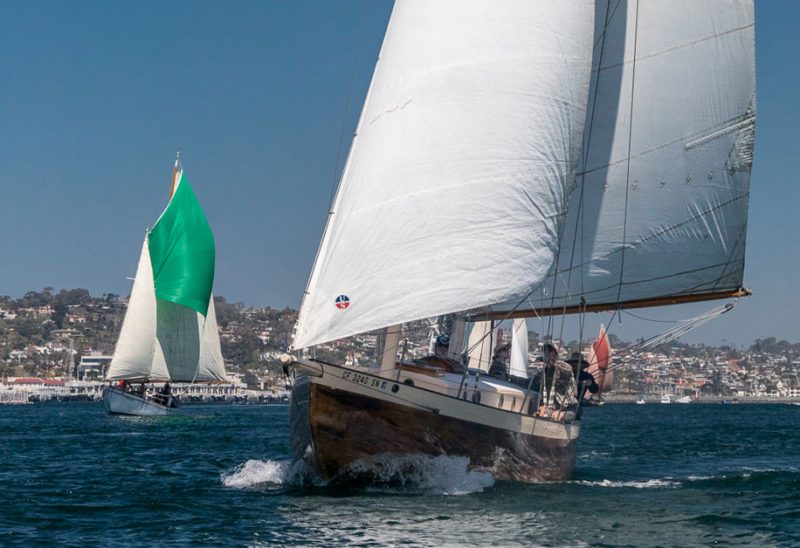
Mexico
The Banderas Bay Regatta has been postponed In response to public health concerns over the COVID-19 virus, the Vallarta YC executive committee has made the difficult decision to postpone BBR XXVIII indefinitely. The cruiser-friendly event had been scheduled for March 24-28.
Also on Banderas Bay, MEXORC did go on, with racing wrapping up today.
Clipper Race Postponed 10 Months
The Clipper Race around the world was to have departed Subic Bay and the island of Luzon in the Philippines on March 21, heading across the Pacific Ocean to Seattle. However, with Seattle in a state of emergency and “medical insurance restrictions in the United States,” organizers scrapped that plan. “We could not allow our teams to depart without a viable destination,” announced the organizing committee. “This, along with the growing global uncertainty on how the situation could develop in the coming months, meant postponing the race was the safest option for all involved.
“The Clipper 2019-20 Race has three legs remaining. These race stages will now be postponed for approximately 10 months, when the remaining circumnavigation will be completed. This length of postponement allows for us to avoid adverse weather patterns on the remainder of our global route. All Leg 6, 7 and 8 crew, along with our circumnavigators, will be able to rejoin the race when it resumes next year. This postponement will have an impact on the timing of future races. The next full edition of the Clipper Race will start in the summer of 2022. More details on this will be confirmed at a later date.”
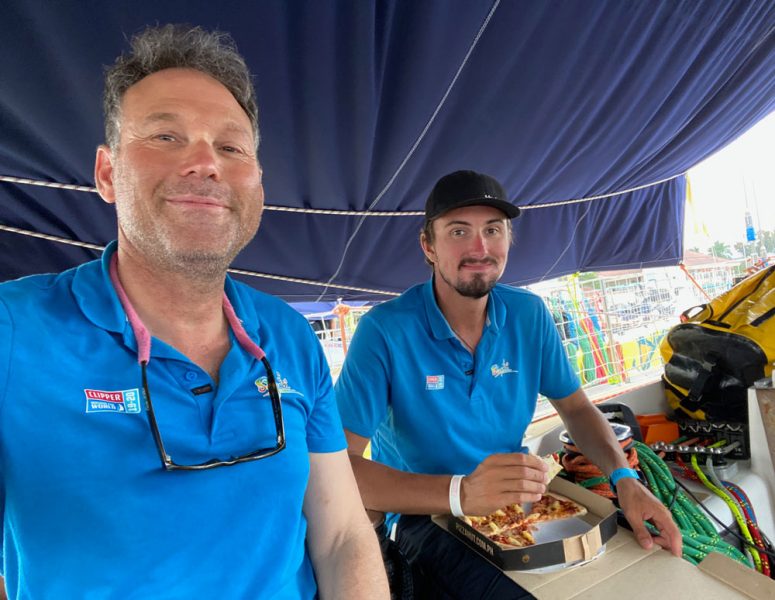
“We are pleased to announce that the quarantine of our crew in Subic Bay has now been lifted and they are able to leave the marina,” reads the official statement. “All crew have travel arranged home, with some already on their way. It is expected that all Clipper Race staff who have been overseeing the complex logistics involved will be traveling back to the UK by Friday 20 March. We look forward to seeing everyone again next year when the race resumes.”
The Latest America’s Cup Disagreement Resolved
The office of the Italian Challenger of Record, Luna Rossa, just sent this press release:
“Following the submission to the America’s Cup Arbitration Panel by the New York Yacht Club / American Magic regarding its participation in the ACWS Sardegna – Cagliari and the subsequent responses of COR 36, the Defender and INEOS Team UK, the Panel published today its decision, summarised as follows.
“Due to the coronavirus pandemic and the restrictive measures imposed by various governments the Panel has decided that it has become objectively impossible to hold the ACWS Sardegna – Cagliari event from the 23rd to the 26th of April 2020 and has cancelled the event, relieving the competitors and the organizers from their obligations arising out from the Protocol.
“The Panel has also decided that it does not have the power to postpone the ACWS Sardegna – Cagliari, to impose the organization of additional ACWS events or to rule that any sailing blackouts not provided for in the Protocol should occur, since it does not have the power to change the Protocol.
“A postponement of the ACWS Sardegna – Cagliari could therefore only be achieved with the mutual agreement of the Challenger of Record and the Defender. As the Defender was not prepared to agree to a change of date of the ACWS Sardinia-Cagliari, the event is now definitely cancelled.” Got that?
“For the complete decision ACAP36/07 click here: https://bit.ly/33tHnen.” Have fun reading that while you’re sheltering in place.
Healing in the British Virgin Islands
When we leave US shores to sail far away from home we sometimes forget we’re actually sailing closer to someone else’s home. When we ‘get away’ from here, we’re getting closer to there, wherever that may be.
Wayne and Suzie Koide of the Richmond Yacht Club-based Sydney 36 CR Encore are far away from home but right where they want to be. Wayne responded to an email from us with, “Just a quick note from Roadtown, Tortola. Thank you for your email that I received today — if it’s anything that frees us, it’s sailing, whether here in the BVI or in the S.F. Bay.
“We’re a little apprehensive about coming back home, but for concern that our borders may close, we’ve decided to press on.”
All is looking good in Roadtown, Tortola:
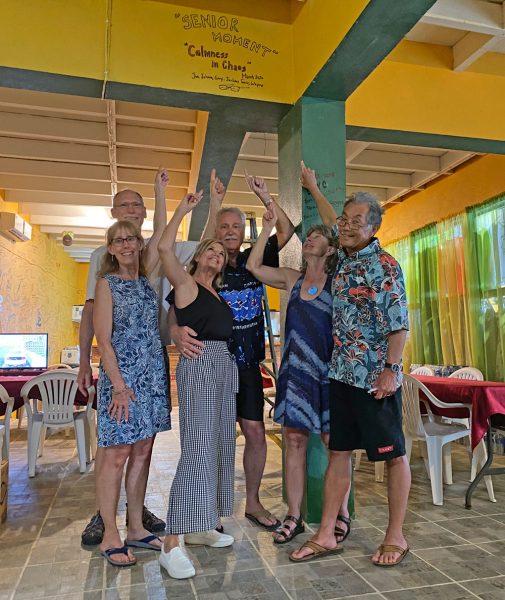
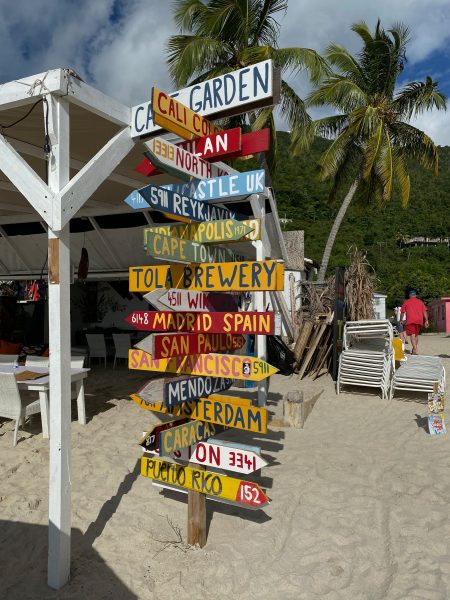
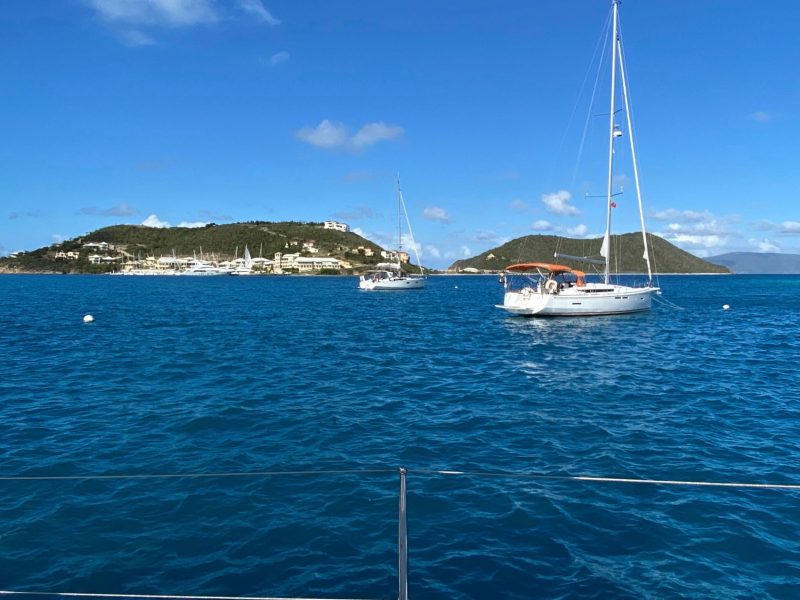
One thing to note in these photos: These are the British Virgin Islands that were walloped in 2017 by both hurricanes Irma and Maria. Now it’s all looking spectacular again. Given our current crisis, we’re sure it will follow the path of Irma and Maria — some short-term pain that will take time to heal but, yes, it will get better.
We often associate sailing with heeling but, in this case, we associate it with healing.
The New Normal in Paradise
The island cruising story continues to evolve quickly as island nations react to global news and health guidelines. We pass on some of the latest updates here, but, given the pace of change, we advise all cruisers to check in with island governments and/or cruiser nets for the latest updates about their intended destinations.
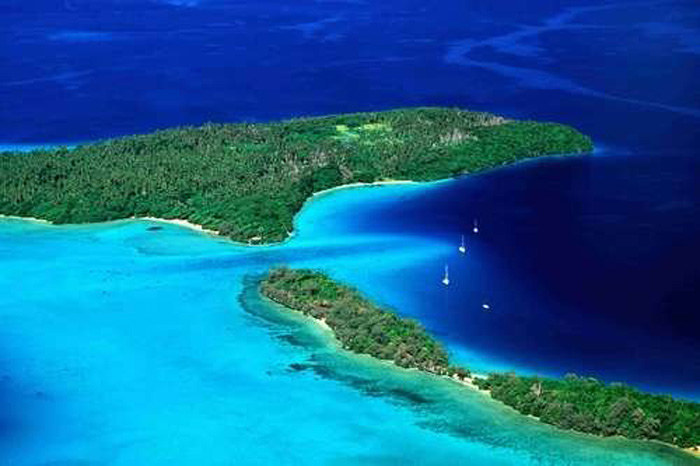
French Polynesia
Andy Turpin, director of the Pacific Puddle Jump, sent out the information below to rally participants and suggests all cruisers pass the information along to other cruisers if they’re able.
“In reaction to the COVID-19 pandemic, arrival policies for French Polynesia continue to evolve. One point of good news: Authorities have relaxed the previously-reported requirement that arriving yachts undergo a 14-day quarantine, apparently accepting the logic that if sailors arrive with no symptoms after spending several weeks at sea, they are probably beyond COVID-19’s incubation interval and are not at risk.
“However, JRCC Papeete issued the following mandate today:
“Due to international health situation, before arriving ashore or anchoring in French Polynesia, all merchant or pleasure ships must report to JRCC (by radio, phone, email or satellite communication) any person on board, crew, passenger, with symptoms of suspected fever and cough. This person must be isolated from the other people on board. JRCC Tahiti will establish a medical radio consultation.
JRCC phone: + 689 40 54 16 16
Radio: 16 Sécurité Sécurité Sécurité
MF SSB: 8201 KHZ – 2182 KHZ
Mail: [email protected]
“Registered Pacific Puddle Jump rally members are asked to email Andy Turpin for the appropriate form, named DPAM FICHE PAR NAVIRE. It will be posted on the PPJ website soon. Andy will then forward them to the Maritime Affairs office.
“If you are in radio contact with other westbound vessels that are not registered with the PPJ, please advise them of this new requirement. We will be happy to handle their info also.”
Caribbean
We also heard from Greg Dorland, now on board his Catana 52 Escapade in Grenada. He wrote on Monday, “Yesterday I was feeling pretty good about being semi-permanently self-quarantined on Escapade here in the Eastern Caribbean. Today not so much, as I started to get emails from friends cruising the islands asking if I knew if this or that island is still open to private boats. Turns out a lot of island countries are closing their borders.”
Just now we got the following update from Greg: “Grenada is closing to new incoming yachts at midnight tonight.” Update as of 3/19/20 – “they will allow yachts in after a 14-day quarantine.” A cruiser who was given this information as they were checking in to Grenada today at the customs office passed along this news.
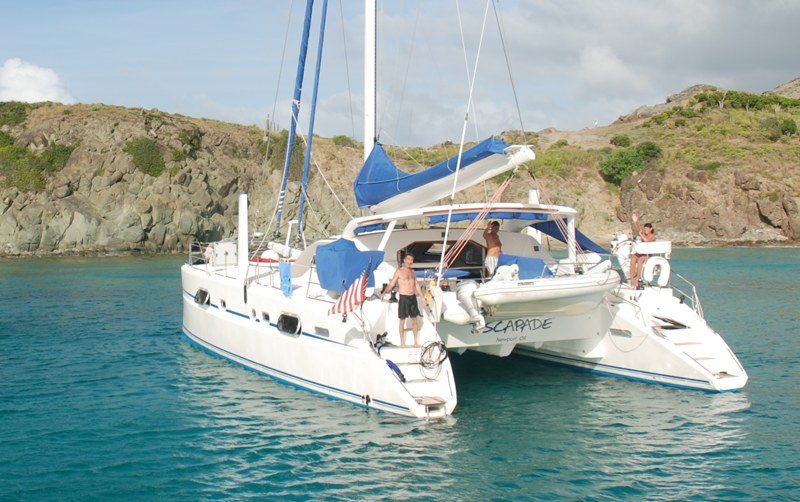
Greg also asked if we might find a way to keep an updated list of the circumstances for boat owners cruising the islands, perhaps planning to return to the US from the islands, and what might be allowed or not allowed.
We’ll do the best we can with updates in ‘Lectronic Latitude and are happy to pass on information sent our way. Andy Turpin and the Pacific Puddle Jump are doing all they can to help participants and other cruisers with information from the entire South Pacific Cruising Network. Cruisers should also feel free to add information and updates to the comment section of these posts. All updates will be linked from our Heading South page.
New information from French Polynesia added here on 03/19/20: “Also, we have decided to refuse access to the territory of non-residents in French Polynesia.” This is in a document issued by the government issued yesterday. You can read the entire document here. (We used Google translate to convert to English.) It also has a request to the entire population of FP which we think is valuable to all of us wherever we are: “I invite you all to the utmost rigor in your behavior. Avoid contact, limit travel to what is strictly necessary. Be responsible citizens to prevent the virus from spreading.” Edouard FRITCH, President of French Polynesia
Additionally, Australia, New Zealand and Tonga have closed their borders. If you’re in the South Pacific now, for the moment, you have to stay there.

